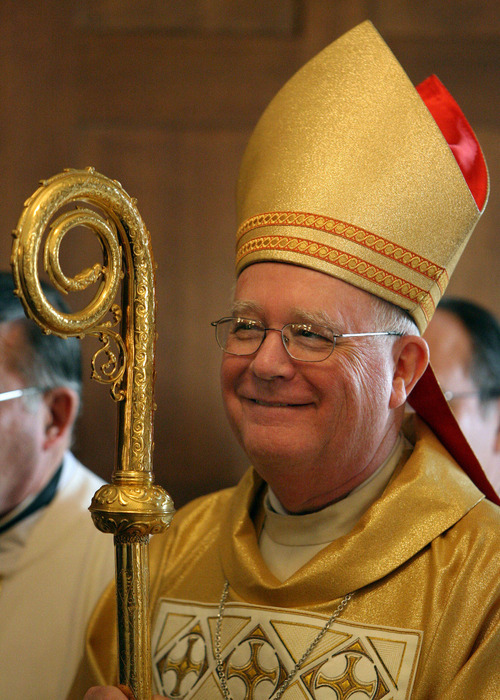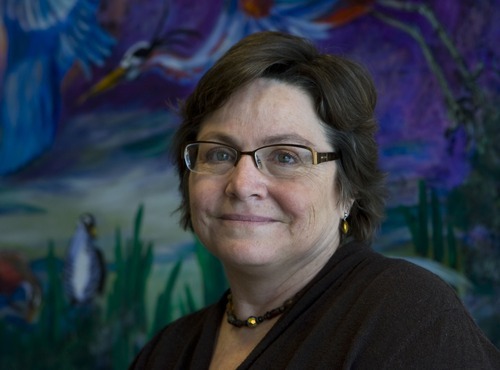This is an archived article that was published on sltrib.com in 2012, and information in the article may be outdated. It is provided only for personal research purposes and may not be reprinted.
As thousands of white-robed bishops from around the globe huddled in Rome during the fall of 1962 for the opening of the momentous Second Vatican Council, no group of Catholics was paying closer attention than the nuns.
Women, of course, were not invited to that historic gathering, which would become pivotal in the life and worship of Roman Catholics everywhere. There were no women consultants or speakers. The only speech by a female, economist Barbara Ward, had to be read by a man. Even the wives of reporters covering the event were not allowed to approach the altar for communion during daily Mass.
"Women's issues were nowhere to be seen at the council," says Colleen McDannell, a University of Utah historian and author of the 2011 book, The Spirit of Vatican II: A History of Catholic Reform in America. "American bishops were much more concerned about racism than sexism."
Still, one of the topics at that groundbreaking assembly was how the church could engage with the modern world — and the sisters were expected to be workers in that world but still remain separate from it.
They embraced the "spirit of Vatican II," McDannell says. "Because the council documents used poetic language, rather than setting up rules and regulations, the meeting opened up bigger possibilities for women."
The council's task was no less weighty than to spell out what kind of church it would be as Catholicism moved into the future. And that was a matter of debate.
One one side were those who believed the church was primarily made up of an elite group of trained and ordained individuals who could decide faith practices for everyone. On the other side were reformers who saw the church as the whole community of Catholics, where decisions would be left to experts and individual believers.
A tug of war between those competing perspectives continues to play out 50 years later.
That includes the recent allegations by the Vatican that the Leadership Conference of Women Religious, the largest U.S. organization of Catholic nuns, was not heeding church doctrine but promoting a "radical feminist" agenda.
No one denies, however, that the changes wrought by Vatican II continue to echo through every parish in the worldwide church. They have become so fully integrated, so commonplace, McDannell says, that few people remember how Catholicism used to be.
The gathering • George H. Niederauer was a freshly ordained priest when the council opened Oct. 11, 1962. Like thousands of fellow priests, Niederauer watched the ceremony unfold on television — in his case on a small black-and-white set in the Claremont, Calif., church where he worked.
The occasion marked one of the ancient church's first media moments.
"We knew it was important," recalls Niederauer, the former bishop of Salt Lake City's Catholic diocese who just retired as archbishop of San Francisco. "We knew that Pope John XXIII wanted an updating of the church, that is, to take the perennial faith and apply it to circumstance in which people were living."
The young priest followed closely the council's discussions about how the church could more fully become "the people of God."
The church, he felt, still had something powerful and creative to say to the modern world about marriage and family, justice and mercy, war and peace.
At the same time, Niederauer says, the world was not just an evil, profane place but had much to offer the centuries-old church. The key was figuring out how to engage the world, he says, without diluting traditional truths.
It was a heady time, says Holy Cross Sister Suzanne Brennan, who was a young novitiate in Indiana during the council.
"Windows and doors were kind of opening," says Brennan, executive director of Utah's Holy Cross Ministries. "It was a great time for us to stop and take note of how we were living the gospel and how we could enhance our dedication and our service in new ways."
Take note they did.
The bishops met in Rome for months at a time before ending in late 1965. The council mandated "full and active" roles for lay members, which led to more of them reading scriptures and serving communion during services. Lay people began studying scripture and theology on their own — and were allowed to teach it.
Involvement by the laity became one of the most important outcomes of Vatican II and led to having priests face their congregations rather than the altar during Mass and celebrating the liturgy not in Latin, but in languages of the people.
"It affected a lot of ways we do things in the church," Brennan says. "We have more deacons to help the priests. And we have included laity on various [church-related] boards who play a vital role in maintaining the viability of our institutions."
But they also agree that many reforms — including for nuns — began years before the council.
Changes in the convent • At least as early as the 1880s, the Catholic hierarchy expected members to attend church-sponsored schools, McDannell says, which led to the creation of a vast network of elementary schools, high schools and colleges. These were staffed almost entirely by nuns.
Nuns were rarely permitted out of convents. Many couldn't wear wristwatches, watch TV, eat in restaurants or take vacations. They donned heavy "habits" (outer clothing) — some of which weighed as much as 14 pounds. They could not have contact with family members. They were too busy running the parish schools to do much else.
All of that changed post-Vatican II.
It began with education. After World War II, Catholic soldiers joined their peers in taking advantage of the GI Bill, which allowed more of them to go to college. That, in turn, required them to be better prepared in their early schooling.
"As Catholics became more educated, there was a greater need for a better educated Catholic workforce," McDannell says. "Religious orders [of nuns] began to say, 'We need to send our sisters to get bachelor's degrees.' "
Suddenly, these sisters were attending college during their summers off. They were engaged in theological debates, discussing developments in the church and proposing their own ideas.
They became "responsible for the academic and religious lives of their students," McDannell writes in her book. "They taught prayers, Bible history, and the catechism, and prepared children to receive the sacraments."
Between 1958 and 1962, more than 23,000 young women entered religious orders each year. It was, the historian writes, the "largest cohort of religious women in the nation's history," reaching a total of 180,000 by 1966.
"The impact of religious women on the character of American Catholicism was never higher than during the council years," McDannell writes. "The time for new ideas to percolate through communities of women committed to religion could not have been better."
It's no wonder, she says, that they listened so avidly to the council's proceedings.
The council urged the nuns to look back at the founders of their orders and their original missions to discover how to adapt those assignments to the needs of the modern world.
"The Catholic sisters took it very seriously," McDannell says. "What they discovered was that their founders were pretty radical, who asked women to do things that were rather unconventional but which met social needs of the time."
Seeing that, the nuns became avid supporters of the council.
"They had something to gain from changes," McDannell says, "whereas men had something to lose — to the laity and to the nuns, who are officially laity."
They heard universality in the eloquence of Vatican II language, which described believers as "the people of God," rather than the "men of God."
Before the ink was dry on the documents, however, Pope Paul VI was "more cautious than his predecessor," she says, "and listened more to the traditionalists."
When John Paul II took over in 1978, he pushed for a more traditional worship style, keeping a wary eye on theological inquiry.
That oversight continues today — even as the number of nuns has plunged (to fewer than 40 in Utah).
"The Vatican wants to take legitimacy away from the older Vatican II nuns," McDannell says, "and replace them with younger, more conservative ones as the standard-bearers."
The U. historian sees such a proposition as a mistake. The involvement of women at the parish level, whether sisters or laity, helps Catholics remain loyal to their church — even in the face of the recent priest sex abuse scandal.
"Catholics who go to church still give to their churches," she says, "because the priest is not the whole church."
For that, they can thank, in part, the church's women, its lay leaders and that visionary council a half century ago.
Facebook:peggy.fletcherstack
Twitter:@religiongal —
Questions facing Vatican II
• How should the church, which claimed to be unchanging from the time of Jesus, change?
• Was the modern world all bad and something to be avoided, or could the church engage with it on topics such as justice, democracy and human dignity?
• What should be the relationship between Catholicism and other branches of Christianity? Other non-Christian faiths?
• How does the church exist in a pluralistic world?
• Should the church operate as a monarchy with the pope as the king and bishops as princes, or as a people of God, where even the laity's voice should be heard?
Source: John O'Malley, National Catholic Reporter







